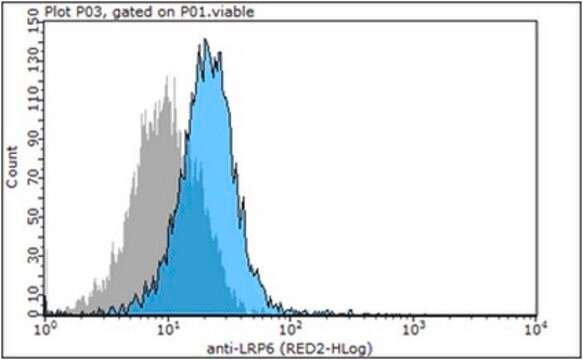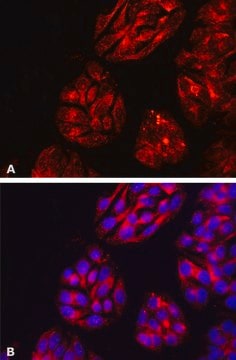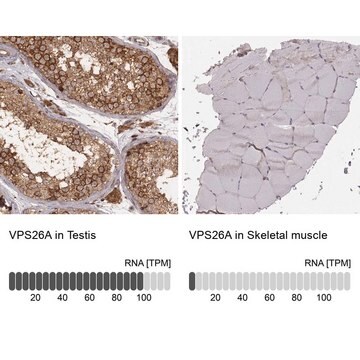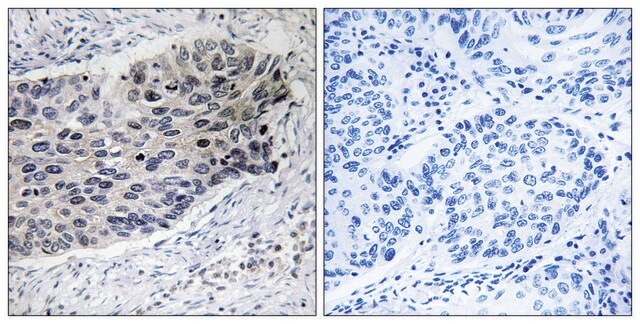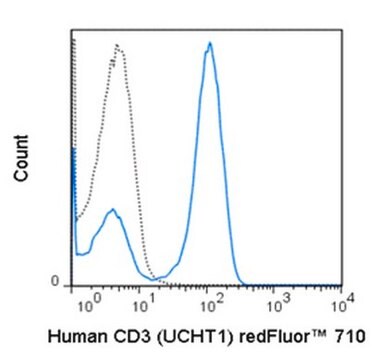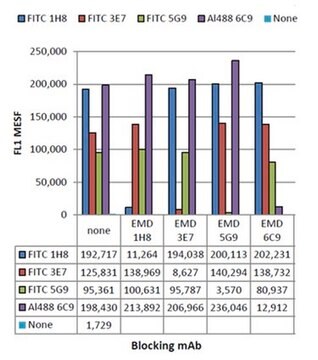CBL150-I
Anti-CD3e Antibody, clone UCHT1
clone UCHT1, from mouse
Sinónimos:
T-cell surface glycoprotein CD3 epsilon chain, CD3-epsilon, CD3e, T-cell surface antigen T3/Leu-4 epsilon chain
About This Item
Productos recomendados
biological source
mouse
Quality Level
antibody form
purified immunoglobulin
antibody product type
primary antibodies
clone
UCHT1, monoclonal
species reactivity
human
technique(s)
ELISA: suitable
flow cytometry: suitable
immunocytochemistry: suitable
immunohistochemistry: suitable
immunoprecipitation (IP): suitable
isotype
IgG1κ
NCBI accession no.
UniProt accession no.
shipped in
dry ice
target post-translational modification
unmodified
Gene Information
human ... CD3E(916)
General description
Specificity
Immunogen
Application
ELISA Analysis: A representative lot was used as the capture antibody for the detection of epsilon-associated TCR complex proteins by sandwich ELISA (Poggi, A., et al. (1996). Int. Immunol. 8(12):1947-1953).
Immunocytochemistry Analysis: A representative lot detected the exogensously expressed human CD3 epsilon chain on the surface of murine T cells by flourescent immunocytochemistry (Clevers, H., et al. (1988). Eur. J. Immunol. 18(5):705-710).
Immunocytochemistry Analysis: A representative lot was employed to determined the plasma membrane and cytoplasmic CD3 immunoreactivity in T cell populations and T-ALL blast cells by flourescent immunocytochemistry (Campana, D., et al. (1987). J. Immunol. 138(2):648-655).
Immunohistochemistry Analysis: A representative lot detected CD3+ T cells (T3+) in the periglandular stromal aggregates in frozen dometrium sections from female donors undergone routine dilation and curettage procedures (Kamat, B.R., and Isaacson, P.G. (1987). Am. J. Pathol. 127(1):66-73).
Affects Function: A representative lot induced surface IL-2R expression and proliferation of human peripheral blood T lymphocytes (Van Wauwe, J.P., et al. (1984). J. Immunol. 133(1):129-132).
Flow Cytometry Analysis: A representative lot was employed for fluorescence activated cell sorting (FACS) of CD3+ human lymphocytes (Beverley, P.C., and Callard, R.E. (1981). Science. 11(4):329-334).
Inflammation & Immunology
Immunological Signaling
Quality
Flow Cytometry Analysis: 0.1 µg of this antibody detected CD3e in 1X10E6 human PBMC.
Target description
Physical form
Storage and Stability
Handling Recommendations: Upon receipt and prior to removing the cap, centrifuge the vial and gently mix the solution. Aliquot into microcentrifuge tubes and store at -20°C. Avoid repeated freeze/thaw cycles, which may damage IgG and affect product performance.
Other Notes
Disclaimer
¿No encuentra el producto adecuado?
Pruebe nuestro Herramienta de selección de productos.
Optional
Storage Class
12 - Non Combustible Liquids
wgk_germany
WGK 2
flash_point_f
Not applicable
flash_point_c
Not applicable
Certificados de análisis (COA)
Busque Certificados de análisis (COA) introduciendo el número de lote del producto. Los números de lote se encuentran en la etiqueta del producto después de las palabras «Lot» o «Batch»
¿Ya tiene este producto?
Encuentre la documentación para los productos que ha comprado recientemente en la Biblioteca de documentos.
Nuestro equipo de científicos tiene experiencia en todas las áreas de investigación: Ciencias de la vida, Ciencia de los materiales, Síntesis química, Cromatografía, Analítica y muchas otras.
Póngase en contacto con el Servicio técnico